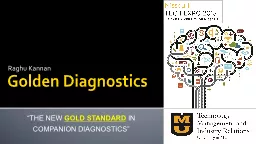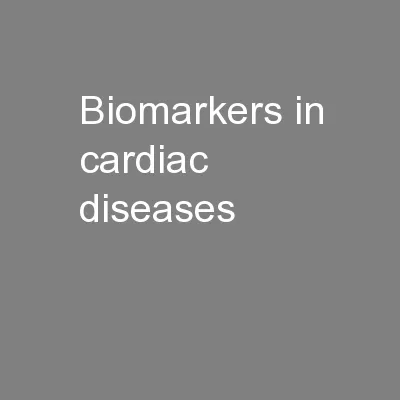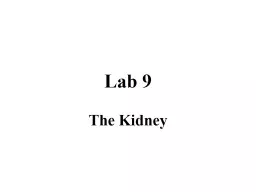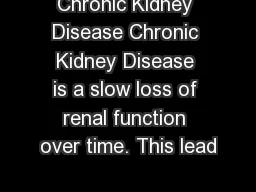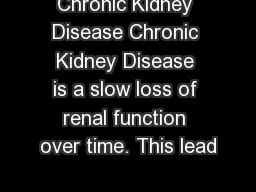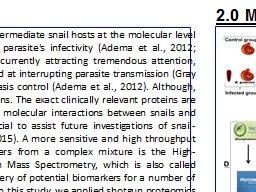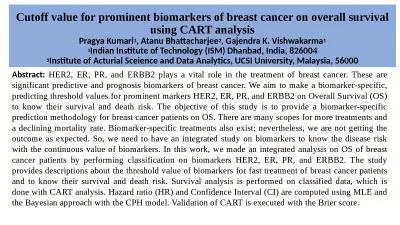PPT-Novel Biomarkers of Kidney
Author : aaron | Published Date : 2020-04-10
Disease NGAL and Cystatin C COL SOHAIL SABIR HOD NEPHROLOGY MILITARY HOSPITAL HOD MEDICAL EDUCATION ARMED FORCES POSTGRADUATE MEDICAL INSTITUTE Biomarker characteristic
Presentation Embed Code
Download Presentation
Download Presentation The PPT/PDF document " Novel Biomarkers of Kidney " is the property of its rightful owner. Permission is granted to download and print the materials on this website for personal, non-commercial use only, and to display it on your personal computer provided you do not modify the materials and that you retain all copyright notices contained in the materials. By downloading content from our website, you accept the terms of this agreement.
Novel Biomarkers of Kidney : Transcript
Disease NGAL and Cystatin C COL SOHAIL SABIR HOD NEPHROLOGY MILITARY HOSPITAL HOD MEDICAL EDUCATION ARMED FORCES POSTGRADUATE MEDICAL INSTITUTE Biomarker characteristic that is objectively measured and evaluated as an indicator of normal biological or pathogenic processes or pharmacologic responses to a therapeutic intervention. Laurence WEISS. Predictive biomarkers in HIV infection. Reflect. The extent of immune deficiency. The level of HIV replication and of HIV reservoir. The level of chronic immune activation/inflammation. Raghu Kannan. “THE NEW . GOLD STANDARD. . IN . COMPANION . DIAGNOSTICS”. Introductory Slide. Current methods of detection. IHC: . Dako. –in accurate. PCR –amplifies . all . genes . FISH –works well; however, microscopic visualization of tumor regions is difficult. FAINELLI . Manon. BOGÓ . Ákos. . Szakács . Júlia . M.D. . . Department of Pathophysiology. Numbers…. Cardiovascular diseases . The most frequent cause of death. 7.5 millions of death/ year. Important concerns in developed countries. Worldwide Trends . 2014. What is a Biomarker?. Worldwide Trends. 2014. What is a Biomarker?. A biological marker, better known as a “biomarker”, is a characteristic . that is objectively measured and evaluated as an indicator of normal biological processes, pathogenic processes or pharmacological responses to a therapeutic . Neil P. Shull, Ph.D., J.D.. Sterne, Kessler, Goldstein & Fox P.L.L.C.. F.I.R.E. Series LXIX. March 8, 2012. Overview of issues. . What can be patented?. Is it useful?. How much data is needed?. Potential prior art issues. James L. Cook, DVM, . PhD. Director, Comparative Orthopaedic Lab & . Mizzou. . BioJoint. Center. cookjl@health.missouri.edu. Osteoarthritis (OA): . Everyone’s Problem. Markets. Canine. 78M companion dogs in US (2015 APPA Survey). Mike Chapman. University of Cambridge Department of Haematology. Novel agents have improved survival. What is a biomarker?. “A characteristic that is objectively measured and evaluated as an indicator of normal biological processes, pathogenic processes, or pharmacologic responses to a therapeutic intervention”. Dialysis experiment results and tests for NaCl and albumin (. start dialysis first. ). Kidney dissection . Urinalysis . Interpret dipstick with the help of a chart . Normal and abnormal constituents of urine . Methods in Clinical Cancer Research. February 12, 2015. Effective incorporation of . biomarkers into phase II trials. There are many roles for biomarkers in Phase II trial designs.. Examples of biomarkers with pivotal role in development of new therapies. Epidemiology. CKD affects about 26 million people in the US. Approximately 19 million adults are in the early stages of the disease . On the rise do to increasing prevalence of diabetes and hypertension. Epidemiology. CKD affects about 26 million people in the US. Approximately 19 million adults are in the early stages of the disease . On the rise do to increasing prevalence of diabetes and hypertension. Schistosoma mansoni. in . Biomphalaria glabrata. Benson Otarigho. 1,3. ,. , . Leandro Xavier Neves. 2. , . Ananda. Lima Sanson. 2. , . Mofolusho. O. Falade. 1. , William Castro-Borges. 2. 1. Cellular Parasitology . Presented by: . Dr. Puneet Opal . Dr. Hayley McLoughlin. A Virtual Event. March 17-19, 2022. DISCLAIMER. 2022 AAC. A Virtual Event. March 17-19. PRESENTER DISCLOSURES. Dr. Puneet Opal (Northwestern University). Pragya Kumari. 1. , . Atanu. Bhattacharjee. 2. , Gajendra K. Vishwakarma. 1. 1. Indian Institute of Technology (ISM) Dhanbad, India, 826004. 2. Institute of . Acturial. . Sceience. and Data Analytics, UCSI University, Malaysia, 56000.
Download Document
Here is the link to download the presentation.
" Novel Biomarkers of Kidney "The content belongs to its owner. You may download and print it for personal use, without modification, and keep all copyright notices. By downloading, you agree to these terms.
Related Documents


